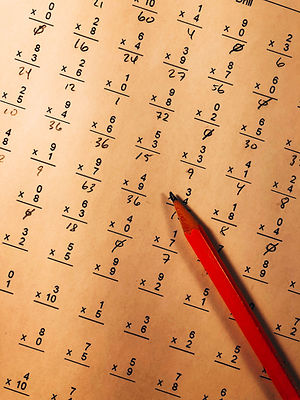
MathBait™ Multiplication
Gold Rush City
Share this resource!
Amp up engagement in this rewarding digital game! Search for gold and distribute the wealth–but you have to be careful...take too much for yourself and your workers will revolt. Can you earn enough to construct your dream city?
Details
Resource Type
Digital Game
Primary Topic
Multiplication
Unit
3
Activity
17
of
19
In this activity, students complete a role-playing game. This game gives students a super reward–the chance to build their own city!
Remind students of the distributive property. In Gold Rush City students begin by directing their miners to different areas on the map. If they select an area without any gold, an X will appear on the map and they can continue searching. If they find gold, they will first be asked to collect all the bars by dragging the slider. Next, they must compute how much gold they have found. Each bar of gold contains some number of nuggets, students will compute by multiplying the number of nuggets by the number of bars.

Now it is time to distribute the wealth. Students move a saw to decide where to split the gold. They can decide to give more (or even much more) to themselves, more to their workers, or split it evenly when possible. But be careful! If you are too unfair, the miners will revolt!
Some students may be interested in understanding when the miners revolt. This is a complex algorithm created for this game. It takes into account how much they have mined (for instance, lots of X's on the map means they mined many areas without any prize which increases their irritability). It's also taken into account how you have split the wealth. Sometimes an uneven splitting may anger them, but not cause them to revolt. Players will see "tensions are high!" and should try to make their miners happy on the next split to calm things down.
If the miners revolt, players will need to click on the little dots. Each dot is a miner attempting to steal their money! The faster the player clicks the less money the miners will get away with.

After splitting the gold, students use the distributive property to determine how much they keep and how much the miners receive. For example, if we collected 6 bars of gold, each containing 5 nuggets, the total is 30 nuggets. Splitting it so that the miners keep 2 nuggets in each bar mean the miners keep 2×6=12 and the player keeps 3×6=18. Notice 12+18=30. Correctly finding the products on the first try will also give players hints as to where to search on the map.
There are 10 gold mines on the map. Once players have found all 10 gold mines they advance to a screen that allows them to spend their wealth and create a city. They can select which items they would like to purchase and construct their city. Students can return to the purchase page as often as they would like to buy more items (so long as they have money remaining). When finished, they can select to take a picture of the city they have created!

©MathBait
Students complete 30 multiplication problems as they progress through the game. Problems are random, with the exception of student choice in how they distribute the wealth. At the end of it all, they are rewarded with the ability to play and create something of their own!
Play
©MathBait created with GeoGebra
The material on this page is copyrighted by MathBait™. Please use and enjoy it! MathBait™ provides a temporary license for Non-Commercial purposes. You are not permitted to copy, distribute, sell, or make derivative work without written permission from MathBait™.
Tell us what you think!
Click to rate this activity

